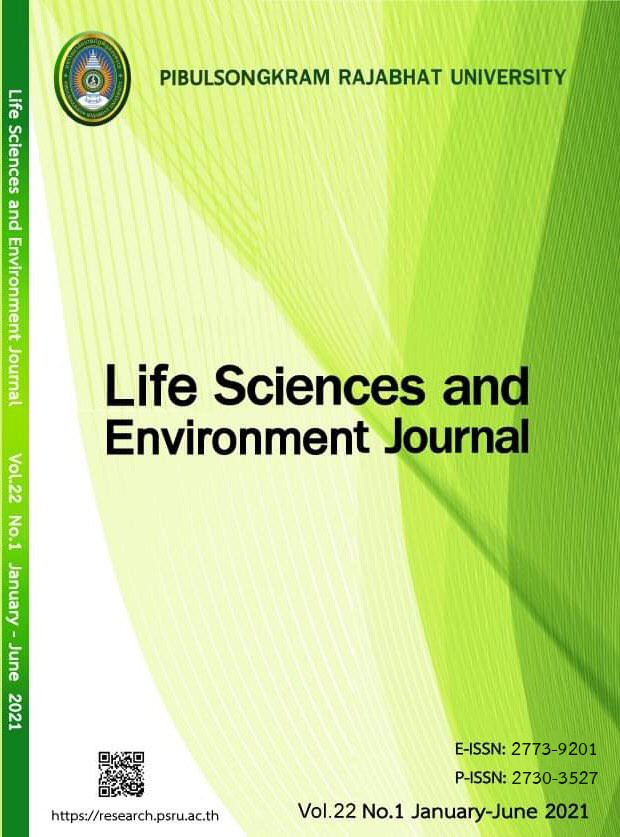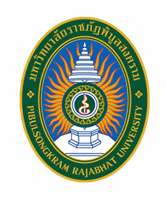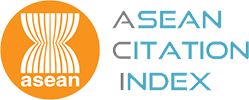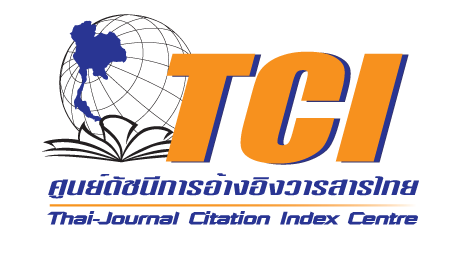DEVELOPMENT OF READY TO EAT VISCOUS FOOD PRODUCTS WITH FIBER FROM RICE BRAN FLOUR FOR ELDERLY
Keywords:
Dietary fiber, Elderly, Rice bran flourAbstract
The objective of this research was to develop the ready to eat viscous food for elderly by replacing Hom Mali rice with rice bran flour at 30% and 35% in comparison with the standard formula (100% Hom Mali rice). Nutritional values, sensory analysis and shelf life of the products were examined. It was found that ready to eat viscous food for elderly with 30% replacement showed the highest consumer acceptance scores. All sensory characteristics of the 30% replacement formula were not statistically different from the standard formula (P>0.05). The nutritional values of the product per serving (500 grams) provided 250 kilocalories, while the standard formula gave 246 kilocalories. The replacement at 30% provided 21 times higher in dietary fiber when compared to the standard formula and the amount of fat reduced to 2 grams. Therefore, replacement of Hom Mali rice with rice bran flour could improve nutritional values of ready to eat viscous food for elderly.
References
Abdul-Hamid A, Luan Y. Functional properties of dietary fiber prepared from defatted rice bran. Food Chemistry 2000;68(1):15-19.
Bhosale S, Vijayalakshmi D. Processing and Nutritional Composition of Rice Bran. Current Research in Nutrition and Food Science 2015;3(1):74-80.
Division of older person’s welfare promotion and rights protection, 2019. Older statistics in Thailand. Available at: http://www.dop.go.th/th/know/1/275. Retrieved 15 January 2020.
Fabian C, Ju YH. A Review on rice bran protein: Its properties and extraction methods. Critical Reviews in Food Science and Nutrition 2011;51(9):816-827.
Food and Drug Administration. Manual for Compliance with the Notification of the Ministry of Public Health Re: Food Standards for Pathogenic Microorganisms. Food Bureau Office Food and Drug Administration Ministry of Public Health, 2013(364); 2016.
International Dysphagia Diet Standardization Initiative, 2019. IDDSI Framework and Descriptors. Available at: https://ftp.iddsi.org/Documents/Complete_IDDSI_Framework_Final_31July2019.pdf.
Retrieved December 9, 2019.
Institute of Food Research and Product Development (IFRPD) Kasetsart University. Universal Design Food/Smile Care Food and National Dysphagia Diet; 2018.
Kristensen M, Jensen MG. Dietary Fiber in the Regulation of Appetite and Food Intake. mportance of viscosity. Appetite 2011;56(1):65-70.
Kumari N, Vinita NK, Rani P. Nutrient composition of full fat and defatted rice bran. Asian Journal of Dairy and Food Research 2017;37(1):77-80.
Puspita CD, Sulistiyati TD. The Substitution of Rice Bran Flour on the Acceptability and Color Characteristics of Gracilaria sp Seaweed Cake. International Journal of Scientific and Research Publications 2019;9(6):135-138.
Steele CM, Alsanei WA, Ayanikalath S. The Influence of Food Texture and Liquid Consistency Modification on Swallowing Physiology and Function: A Systematic. Dysphagia 2015;30(1):2-26.
Sharif MK, Butt MS, Anjum FM. Preparation of Fiber and Mineral Enriched Defatted Rice Bran Supplemented Cookies. 2009. Pakistan Journal of Nutrition. Available at: https://www.researchgate. net. Retrieved April 5, 2020.
Srijesdaruk V, Uriyapongson J. Stabilization process for rice bran for value added nutrition. KKU Research Journal 2008;13(2):255-235.
Downloads
Published
How to Cite
Issue
Section
License
Each article is copyrighted © by its author(s) and is published under license from the author(s).










